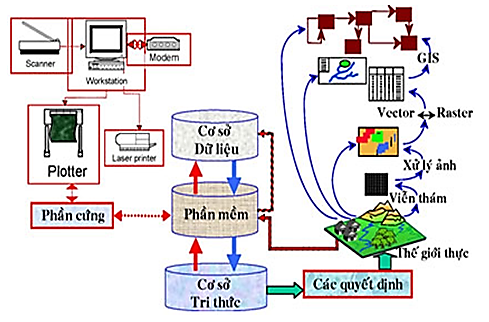With the important role of the sea in the socio-economic development of Vietnam in general, coastal provinces in particular require appropriate development plans and strategies in accordance with sustainable and growth orientation. blue; not timely proposed to the Central Party and Government, ministries, branches to help remove difficulties, problems in institutions, mechanisms, policies, decentralization of management and administration, complete organizational structure .. .; institutions, policy mechanisms to attract resources, especially external resources.
The requirements on environmental protection and promoting the value of natural resources for sustainable socio-economic development today require the province to quickly change the mode of development (innovation model of growth from brown to green, restructuring the economy), reducing dependence on finite resources (coal, soil, limestone, clay, ...) and cheap labor to shift strongly to develop on more sustainable factors, including renewable resources and historical traditions, culture, science and technology, and knowledge economy.
The marine economic development still faces many difficulties due to the lack of legal documents on sea and islands; the exploitation and use of natural resources in littoral zones are not planned and are ineffective; the coastal environment has been changed in a bad direction; biodiversity and aquatic resources are declining; The lives of people in coastal and coastal areas are exposed to many risks due to natural disasters and climate change.
Recognizing this issue for all coastal localities, the 13th National Assembly issued the Law on Natural Resources and Environment of Sea and Islands. In which, Clause 1, Article 23 of the Law on Natural Resources and Environment of Sea and Islands stipulates that the coastal protection corridor is defined as “The coastal strip is established in the areas where the ecosystem needs to be protected, maintain the service value of ecosystems and natural landscapes in the coastal area; reduce coastal erosion, respond to climate change, sea level rise; ensuring the community's right to access to the sea ”. Clause 4, Article 23 states “People's Committees of centrally-affiliated cities and provinces have the sea, based on the local real situation and the provisions of this Article, are responsible for organizing the establishment, announcement and management. coastal protection corridor under the management scope ”.


Main contents of planning and establishment of coastal protection corridors include:
1. Make a list of areas where coastal protection corridors must be established.
- Collect information and data for the establishment of coastal protection corridors.
- Investigation of current topography, geomorphology, geology, ecosystems; current state of coastal exploitation and use; community access to the sea.
- Surveying and measuring meteorological and marine factors.
- Assessment of current natural resources and environment in coastal areas.
- Evaluate and propose areas associated with the requirements of ensuring the right of people to access the sea.
- Detailed determination of the line of average high tide water level for many years; average lowest sea level in many years in the province and within 3 nautical miles, and 6 nautical miles.
- Identify and propose a list of areas where coastal protection corridors must be established.
2. Determination of the width and boundary of the coastal protection corridor.
- Determination of characteristic sections.
- Determination of coastal erosion distance.
- Determination of sea level rise due to rising waves.
- Determine the distance to protect the ecosystem.
- Determine the distance to ensure the right of people to access the sea.
- Calculate the width of the integrated coastal protection corridor and define the boundary of the coastal protection corridor.




